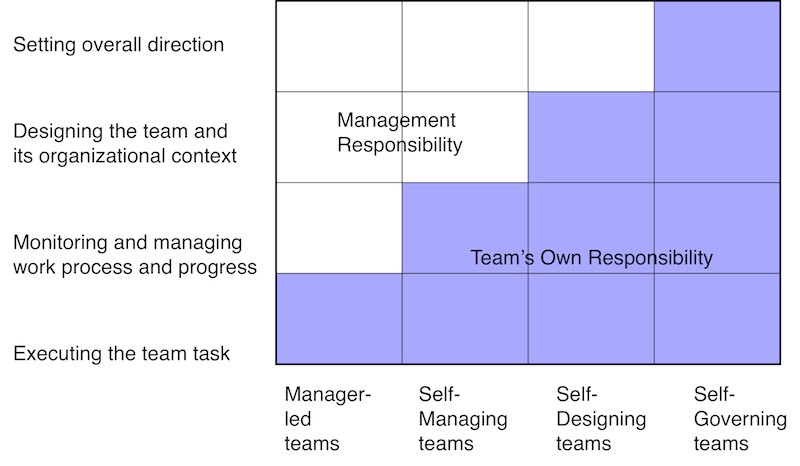Self-Management
An essential part of Scrum and LeSS is self-managing teams. The term self-managing teams originates from team researcher Richard Hackman and is defined as:
The team is responsible for executing the tasks and monitoring and managing process and progress.
This has profound implications to the role of managers.
Types of teams

Figure 1 shows four different types of teams:
- manager-lead teams
- self-managing teams
- self-designing teams
- self-governing teams
They also show four responsibilities:
- executing the task
- monitoring and managing process and progress
- designing the team and its organizational context
- setting the direction
LeSS implies at least self-managing teams and that means that the monitoring and managing process and progress belongs to the team and not to the manager.
Implications on the manager responsibilities
Changing from manager-lead teams to self-managing teams has huge implications on the role of managers. It means that:
- the team checks whether they are on track (monitor the progress)
- the team takes action when not on track (manage the progress)
- the team decides how to work (managing the process)
- the team resolves team conflict and fixes problems in the team (monitor and manage the process)
Hence, it is not part the managers responsibility to
- track the status of the Sprint
- have any kind of “status meeting” or “manager meeting”
- tell the team what to do… or to work overtime
- decide which team member needs to be taken aside to fix production issues
- monitor the team in an “agile project management tool”
- etc.
It is important to understand that we do not want to hide information from managers either. Managers are encouraged to Go See and teams should create complete transparency. But they don’t use the information they get to control the team and neither do they put additional things in place to keep track of the team.
